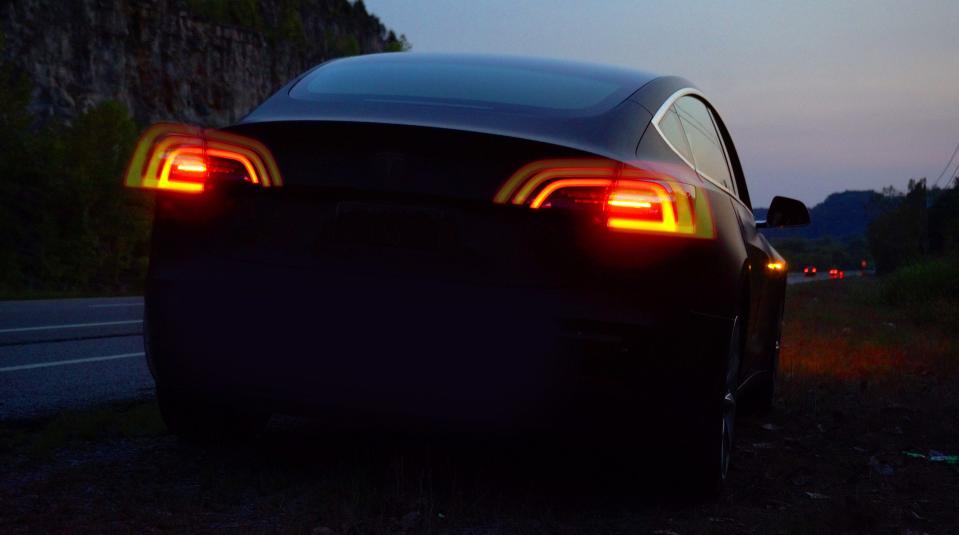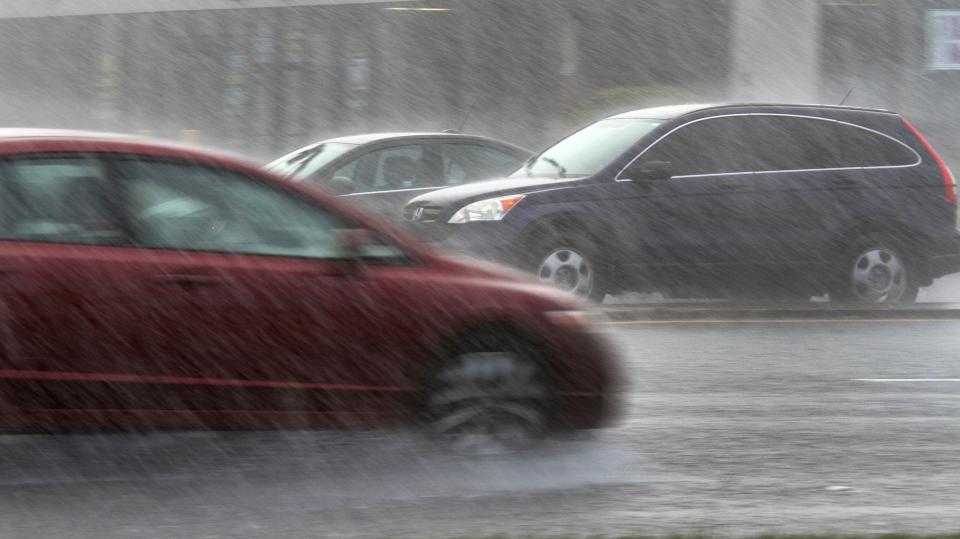Isn't it illegal to drive with hazard lights in the rain in Florida? Not anymore
If you’re on a highway during one of Florida’s severe afternoon thunderstorms, there’s generally a routine light show that has nothing to do with the booming thunder overhead.
When visibility declines, most drivers are quick to activate their vehicle’s flashing hazard lights, presumably to make the vehicle more visible to everyone around it.
But, wait, isn’t that illegal?
Not anymore.
After years of being bombarded by messages from law enforcement and state highway officials to NOT use your hazard lights while driving in low-visibility situations, the law was changed two years ago by the state legislature.

So drivers can now feel free to flash without fear of penalty, not that the previous law seemed to stop many flashers anyway.
Here’s what you need to know about Florida’s law on using hazard lights while driving:
What's the law on using hazard lights while driving in bad weather?
The practice is now allowed in Florida according to a law passed by the legislature that went into effect on July 1, 2021, but only on highways with speed limits at or above 55 mph and only when conditions create “extremely low visibility.”
Such conditions would include fog and heavy rainstorms, such as the whopper that slowed traffic along Interstate 4 to a crawl earlier this week in Volusia County.

The change in the law resulted from two lines contained in a 38-page transportation bill passed by state lawmakers in the 2021 legislative session. The new law related to use of hazard lights sparked no discussion in debate of the bill and no objection from state transportation officials.
Why had it been illegal to use hazard lights while driving?
The long-existing previous ban of the practice was based on warnings from the Florida Highway Patrol that motorists using hazard lights while driving is confusing because troopers look for the flashing lights as a signal for help from a disabled vehicle.
Also, hazard lights can override a vehicle’s turn signals, making it treacherous to change lanes. According to the previous law, the lights only were to be used when stopped on the side of the road or during a funeral procession.
Florida was among only 10 states nationally that prohibited using hazard lights while driving, according to the American Automobile Association (AAA).
Are there drawbacks to the new hazard light law?
Despite the new law, AAA still advises motorists against driving with hazard lights flashing, said Mark Jenkins, the company’s Tampa-based spokesman.
“It could be confusing to other drivers, especially in poor visibility,” Jenkins said by email.
“When drivers have car trouble, they are to safely move to the roadside and activate their hazard lights,” he said. “So, if you’re driving with your hazards on, approaching drivers may mistake you for a disabled motorist and unnecessarily take evasive actions, which could jeopardize their safety.”
AAA recommends that drivers take other steps to cope with limited visibility in heavy rain or fog.
More rain expected this weekend: Weekend weather in Volusia, Flagler: Expect more heat and rain
“Our advice, if visibility is poor, is to find a safe place to wait until conditions improve,” Jenkins said. “Otherwise, slow down and increase your distance from other vehicles around you. Use the right edge of the road or edge lines and center lines as visual guides.
AAA reminds motorists to always turn on headlights when turning on windshield wipers.
“When it’s foggy, use your low beams,” Jenkins said. “High beams will reflect off the fog and impair visibility even more.”
This article originally appeared on The Daytona Beach News-Journal: Is it legal to drive in Florida with hazard lights on in bad weather?

